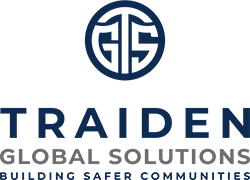Avoiding Slips, Trips, and Falls at the Construction Site
Watch your step!
We’ve all heard this many times. But it’s so easy to get distracted and not pay attention to where we are going or what we are doing. This is how slips, trips, and falls occur.
Falls are one of the leading causes of injury in the construction workplace. While the most catastrophic of these occur when working from heights, believe it or not, many injuries also happen at the ground level; and many of these accidents occur when walking across uneven ground that is too hard, too soft, wet, or muddy.
Twisted ankles, knee strains, and back injuries are the most common injuries; but depending on how a person falls, so are fractured wrists and muscle tears.
What your employees need to know
Distractions rank high on the list of injury causes, in these conditions. It’s important to stay focused while navigating uneven ground. If someone is carrying a piece of equipment, startled by a loud noise, moving too fast, or even talking with a colleague, his/her focus can switch away from the ground conditions. This can keep workers from identifying trip hazards, potentially causing them to take an unexpected fall.
Slowing down when the ground is soft or wet is a common practice for people who work on dirt or grass. However, conditions can be just as dangerous after the ground has dried out following rainfall. If heavy machinery moved through the area when the ground was wet, large tire tracks may have been left behind. When the ground dries, these tracks harden leaving deep ruts. These ruts pose a serious trip hazard. Not only that, if someone does trip over one and fall, they are at risk of further injury as he/she will likely land on the same deep, hardened ruts that led to the initial trip.
What your employees need to do
Eliminate the distractions as much as possible. As mentioned above, walking at a speed appropriate for the conditions is a must. Avoid other distractions too, such as carrying tools or equipment with you. Maybe these items can be transported on one of the vehicles needed in the area.
Survey the jobsite each day in order to identify problem areas to be aware of or avoid. This includes:
- Identifying the ruts, slippery conditions, and other uneven ground on the worksite.
- Identifying holes and trenches on the site. Cover them and/or rope them off with caution tape to prevent access to the area.
- Keeping shoe and boot tread clean to provide better traction.
- Do not take shortcuts through debris piles.
Additionally, to further prevent the potential for injury while working on uneven ground, make sure walkways and areas around ladders are always kept clear of tools or debris. Pay close attention to where cords and hoses are placed as these can also create tripping hazards.
At your safety meeting
Discuss with your employees how being distracted increases the risk of injury and strategize on how best to avoid those distractions. Also discuss the ground conditions you will be working with and seek out ideas on how best to avoid the hazards created by those conditions.
- Identify an obvious hazard – such as slippery conditions or a deep rut caused by heavy machinery – and demonstrate the risks involved and how to navigate these areas.
- Emphasize the importance of keeping shoe or boot soles clean. Provide a tool such as a small brush or even a stick where workers can easily clean off the dirt or mud while in the field.
- Remind employees to report any unsafe conditions.
- Practice good housekeeping: if you drop it, pick it up. Return all tools, hoses, and cords to their proper location.
By taking the extra time to avoid distractions, survey the ground conditions, and identify the different safety hazards, your employees get in the habit of looking for trouble spots and avoiding them.
The above evaluations and/or recommendations are for general guidance only and should not be relied upon for legal compliance purposes. They are based solely on the information provided to us and relate only to those conditions specifically discussed. We do not make any warranty, expressed or implied, that your workplace is safe or healthful or that it complies with all laws, regulations or standards.
